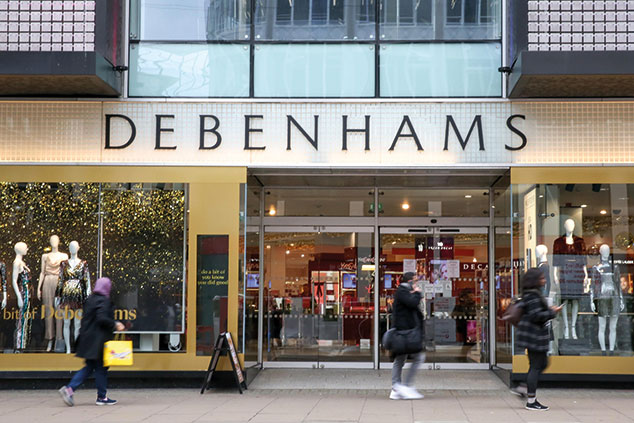
The savage bear market in the retail property sector may be over, but investors must tread carefully.
A24% jump in the share price of Intu Properties on 11 October, a 10% jump in Hammerson’s share price and strength in other property companies with retail exposure has raised hopes that the savage bear market in the sector is over. Richard Williams, research analyst at Marten & Co, calculates that the average share price of the six companies with most exposure had fallen more than 60% in the four years to mid-2019 before the first signs of a turn-around in August.
The sector has seen a perfect storm. Overbuilding of shopping centres on the assumption of never-ending growth in demand created excess capacity just as consumers were switching many of their purchases online. Meanwhile, rising rents, high rates and ever-more stringent traffic and parking controls discouraged both shoppers and demand for sites, while rising wage costs are lowering margins.
The Office for National Statistics (ONS) estimates that online sales now account for 20% of the total, a proportion that some expect to grow to 50% within a decade. While the ONS shows steady 3% per annum growth in retail sales in the last three years, the British Retail Consortium notes that there have been four months of negative sales growth since the end of the first quarter. Like-for-like sales have fallen by 1.7% since September 2018; non-food sales have underperformed food ones.
Shop closures hit a five-year high
The result has been not just the disappearance of many independent shops from the high street, but also the insolvency or drastic shrinkage of major chains such as House of Fraser, Debenhams and the Arcadia empire. Where the chains have survived, they have done so through company voluntary arrangements, which enable the retailer to cut the debt burden and rental costs, to the detriment of their landlords.
Net closures reached a five-year high in the first half with a net 1,234 shops closing on Britain’s top 500 high streets. The biggest area of decline was in fashion, under immense pressure from online retailers, with a net loss of 118 stores despite 144 new openings. There were 143 net closures of estate agents, while banks and travel agents continue to close branches. There were over 100 pub and restaurant closures due to market saturation. The biggest growth area has been charity shops, which pay no rent, rates or wages.
Adapting to the online shopping boom
For retailers, it’s not all bad news. Many have evolved their business models to encourage buying online and collecting in store. Surplus space enables them to cut costs: Next says it is seeking 20%-30% cuts in rents as they come up for renewal. Technology streamlines reordering, facilitates online marketing, reduces cash handling costs and cuts theft. For successful formats, expansion is getting cheaper while rent commitments are far shorter and more flexible than the historic 25-year leases with upward-only rent revisions.
Retailing is changing, not disappearing. Retail property companies are seeking to adapt by adding residences and workspaces to their sites. Prime shopping centres, owned by Intu, Hammerson and other major listed companies, are performing far better than secondary locations, while the central London “villages”, where a landlord with concentrated ownership can manage and improve the whole area, continue to prosper to the benefit of Shaftesbury and Capital & Counties.
With Hammerson trading at a 56% discount to net asset value (NAV) and Intu at 83%, a lot of bad news is in the price. The problem is their debts; with loan-to-value ratios of 45% and nearly 60% respectively, further falls in valuations and rental income will be magnified in NAV and earnings terms. They may be able to slow the pace of falls in rental income, but earnings will remain under pressure. Intu has already cut its dividend by 67%; Hammerson’s yield of 8.6% looks unsustainable.
Where to look now
The contrarian investors aren’t impressed. Alastair Mundy, manager of Temple Bar, and his team took a long hard look at Hammerson. “It’s not all bad news; about half of NAV comes from European markets, which aren’t facing the same challenges as the UK,” he says.
But they concluded that “there are more straightforward ways to play value than this. You don’t need to get too bearish to put lower rents on a higher yield resulting in a significantly lower capital value. Then compare that with the debt and… the bears’ worries [may be] genuine”.
Safer options might be Land Securities (LSE: LAND) and British Land (LSE: BLND), with retail exposure of 42% and 45%. Both yield around 5.5% and trade at discounts to NAV of 35%-40%. Capital & Counties (LSE: CAPC), trading at a 24% discount, is proposing to split its prime-quality Covent Garden portfolio from its Earl’s Court residential development, with high operational gearing to a turnaround in the currently moribund central London market. A 20% rally in the Shaftesbury (LSE: SHB) share price has narrowed its discount to 10%, but having proved its resilience to difficult market conditions, it still looks attractive.